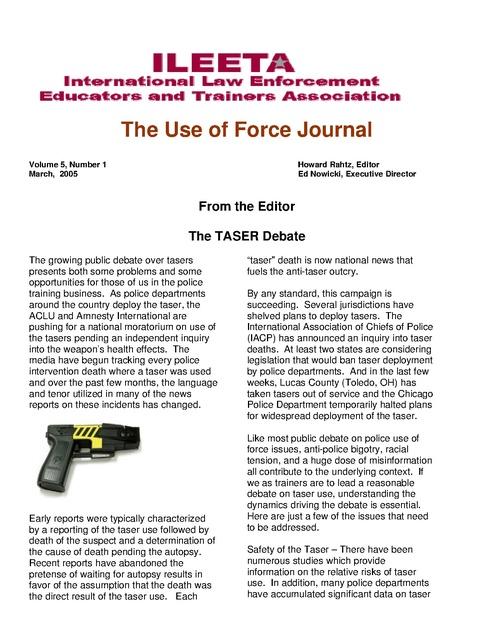Table of Contents
- Stun Gun Use and Fatalities Examined Through Legal Frameworks
- Ethical Considerations Surrounding Non-Lethal Weapons in Law Enforcement
- Case Studies Highlighting Risks and Accountability Issues
- Policy Recommendations for Safer Implementation and Oversight
- In Summary
Stun Gun Use and Fatalities Examined Through Legal Frameworks
Legal scrutiny surrounding the use of stun guns has intensified as courts grapple with cases involving fatal outcomes. Central to these debates are questions of proportionality and justifiable force, particularly when stun gun deployment leads to unexpected deaths. Jurisdictions vary widely in their interpretation of the acceptable use of such devices, often weighing the immediate threat posed by suspects against the risks stun guns may carry. Recent rulings underscore the need for clear legal guidelines that balance public safety interests with the rights of individuals subjected to incapacitating force.
Experts emphasize that the legal frameworks must also consider:
- Accountability measures for law enforcement agencies ensuring responsible stun gun usage
- Comprehensive training to mitigate misuse and unintended consequences
- Transparent investigation protocols following stun gun-related incidents
These elements collectively aim to prevent litigation and foster trust between the public and policing entities, signaling a critical juncture in aligning technological tools with evolving human rights standards.
Ethical Considerations Surrounding Non-Lethal Weapons in Law Enforcement
As stun guns gain prominence in law enforcement, a complex web of ethical dilemmas emerges, challenging the very principles of justice and human rights. While designed to serve as non-lethal alternatives, these devices have been implicated in incidents leading to serious injury and, in some cases, death. This paradox raises urgent questions about the appropriate use of force and whether the deployment of such weapons can be reconciled with the duty to protect life. Critics argue that reliance on stun guns may foster complacency in seeking less aggressive intervention strategies, potentially compromising the fundamental rights of suspects and civilians alike.
Key concerns focus on transparency, accountability, and the adequacy of training for officers wielding these tools. Ethical use demands strict protocols, including:
- Clear guidelines defining circumstances for deployment;
- Comprehensive reporting and review mechanisms to assess incidents;
- Ongoing evaluation of health effects, especially for vulnerable populations;
- Enhanced officer education emphasizing de-escalation techniques prior to use.
The broader societal impact also invites debate about the potential normalization of force within policing practices, underscoring the need for a balanced approach that safeguards public trust while ensuring effective law enforcement.
Case Studies Highlighting Risks and Accountability Issues
Recent case studies have emphasized the complex nature of stun gun usage, uncovering significant risks that escalate into fatal outcomes. In multiple incidents across the United States, individuals subjected to stun gun deployment experienced unforeseen medical complications, raising critical questions about the adequacy of current safety protocols. These cases have revealed patterns of misuse, including prolonged exposure to the device and deployment on vulnerable populations such as individuals with pre-existing heart conditions or mental health disorders.
Key findings from these case analyses include:
- Disparities in law enforcement training and adherence to stun gun guidelines
- Insufficient accountability mechanisms following fatal encounters
- Inadequate medical evaluation policies post-stun gun use, delaying crucial treatment
- Public concern over blurred lines between non-lethal force and potential lethality
These revelations have invigorated legal debates on holding officers and manufacturers responsible, underscoring the urgent need for reform. Advocacy groups argue for transparent investigations and stricter oversight to prevent further loss of life, positioning accountability as the pivotal step toward ethical law enforcement practices.
Policy Recommendations for Safer Implementation and Oversight
To mitigate the risks associated with stun gun use, lawmakers and law enforcement agencies must establish clear, standardized protocols governing deployment and oversight. These should include mandatory training focused on recognizing signs of medical distress and de-escalation techniques before resorting to electroshock devices. Additionally, there should be a requirement for body cameras to be activated during any stun gun deployment, ensuring transparency and accountability. Instituting independent review boards to evaluate each incident involving stun guns can also provide objective assessments that inform future policy adjustments.
Enhanced data collection and public reporting mechanisms are crucial for continuous monitoring and assessment of stun gun-related outcomes. Policies should encourage collaboration between medical professionals, civil rights advocates, and law enforcement to develop best practices minimizing fatalities. Furthermore, a public education campaign about the potential risks and legal restrictions surrounding stun gun use could foster greater community trust and awareness.
- Mandatory periodic training updates for all officers authorized to use stun guns
- Regular audits of stun gun deployment data by independent bodies
- Clear guidelines for medical response in the aftermath of stun gun use
In Summary
As the use of stun guns continues to rise among law enforcement and civilians alike, the legal and ethical debates surrounding their potential for fatal outcomes remain increasingly complex. Stakeholders from policymakers to human rights advocates call for clearer regulations and enhanced accountability to balance public safety with individual rights. Ongoing investigations and court rulings will be pivotal in shaping the future framework governing stun gun deployment. As this issue evolves, comprehensive dialogue and evidence-based policies will be essential to address the challenges posed by these controversial devices.Check Our Other Blogs
- StunGun – Your Trusted Source for Stun Guns, Laws, and Self-Defense Tips
- PepperSprayLaws – Your Trusted Resource for Pepper Spray Information
- StunGunLaws – Your Trusted Guide to Stun Gun Legality and Safety





